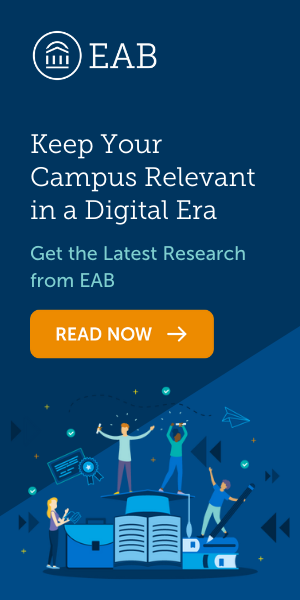The Covid-19 pandemic forced many institutions into crisis mode. While they performed admirably, now is the time to build greater resilience before future disruptions strike
For 18 months, higher education institutions have battled to continue serving their students amid the disruption of the Covid-19 pandemic. However, in simultaneously dealing with a multitude of challenges, many universities are starting to question whether urgent needs are crowding out strategic thinking.
During a webinar held at the Times Higher Education Leadership and Management Summit, leading edtech firm EAB and academics from across the UK discussed whether institutions have been prioritising the right things during the pandemic.
“All leaders balance responsibilities,” said Gary Guadagnolo, director of research growth strategy at EAB. “But crisis management crowds out strategic leadership due to stakeholder anxiety, the lack of a strategic playbook and irrelevant urgency. The resultant stress forces us to act on habits rather than goals. Stress immediately puts us on the defensive.
“The crisis thinking that we were most anxious about on campus concerned the threat of isolationism,” Libby Wilson, director of transformation at Sheffield Hallam University, admitted. “We worked really hard to avoid being affected by this but, as with any crisis, it’s easy for the strategic to become the operational.”
Louise Bohn, head of programmes for the vice-chancellor’s office at the University of East Anglia, agreed, adding that it had been hard to sustain motivation and engagement as the pandemic has rumbled on. “We have started to see some change fatigue,” she said.
How teams and individuals could guard against crisis thinking was a key point of discussion during the webinar. Everyday habits, like leveraging individual stories, viewing stress as an enhancer and practising cognitive flexibility, were all deemed useful strategies.
“As a campus university, the crisis demonstrated how exposed we could be,” Bohn added. “But the pandemic also brought down historic barriers and made communication more regular and open. What enabled us to respond in this way was culture. We have a strong sense of community on campus that brings people together. Going forward, the challenge will be to maintain this.”
“The pandemic led us to discover a sense of agile decision-making, cross-functional teams and entirely different ways of working,” Wilson explained. “The crisis required us to tap into our experience and expertise across the entire institution.”
Resilience must manifest across every aspect of an organisation. Cognitive, behavioural and contextual approaches must be considered. “A resilient environment must boast a strong sense of purpose and a desire to question fundamental assumptions,” Guadagnolo noted. “The development of practical, generalisable habits is also important, as is fostering deep social capital and resource networks.”
“In a year, we need to see that we’re all still pulling in the same direction,” Wilson said. “We need to hold on to an integrated way of working. “Another challenge concerns balance. Can we bring back social interactions but in a way that enhances equality? That will give universities resilience.”
Maintaining a strong campus culture will also be key to building post-pandemic resilience. “Of course, in the future, this is likely to involve a virtual campus as well as a physical one,” Bohn said.”
What a resilient university will exactly look like in the future is difficult to say, but it’s something institutions should start thinking about now. After all, a resilient institution will not be built overnight.
The panel:
- Gary Guadagnolo, director of research growth strategy, EAB (chair)
- Louise Bohn, head of programmes, vice-chancellor’s office, University of East Anglia
- Libby Wilson, director of transformation, Sheffield Hallam University
Watch the session on demand above or on the THE Connect YouTube channel.
Find out more about EAB.








